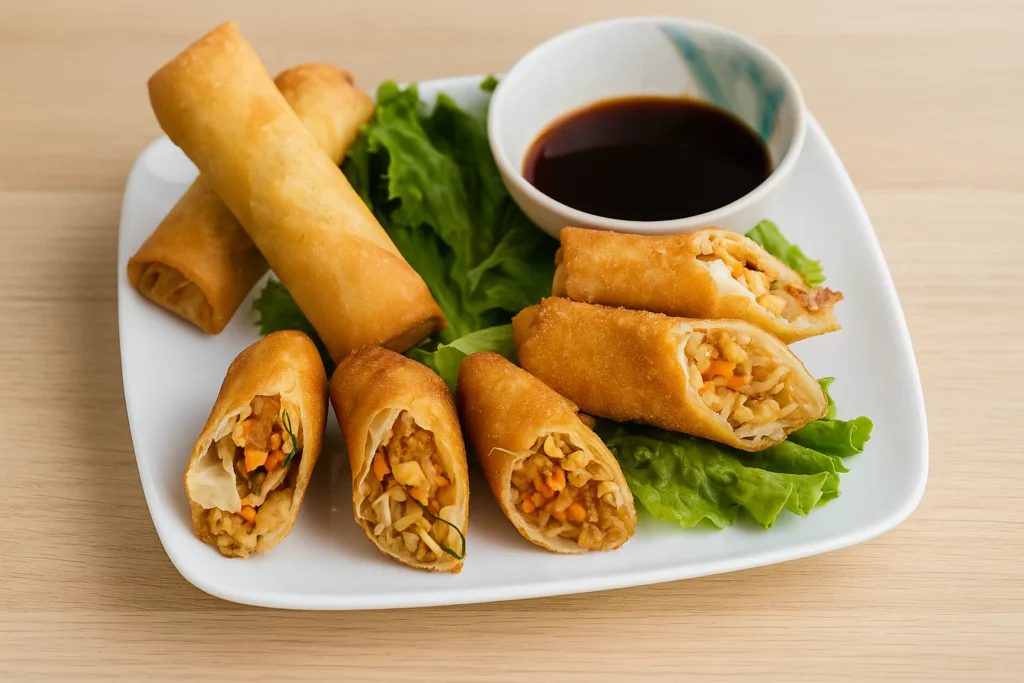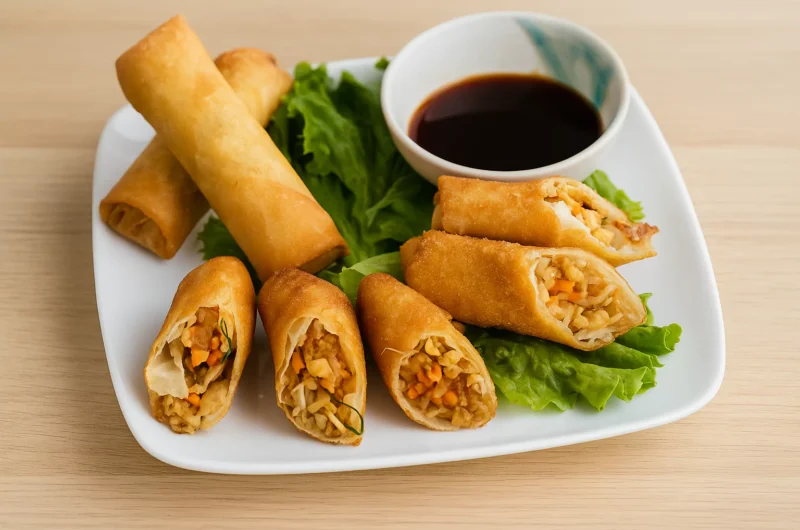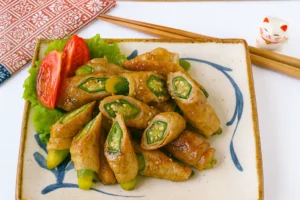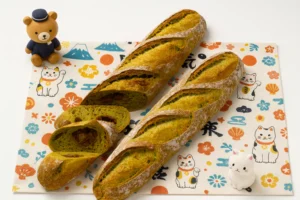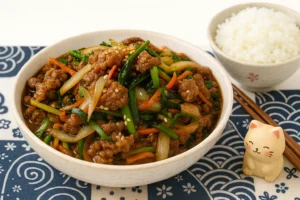What if you could recreate that golden, crispy Harumaki from your favorite Japanese restaurant right in your kitchen? It might seem tricky, but with a few simple steps, you’ll be making these crunchy bites with confidence. This guide walks you through a home-cooked version of Harumaki that’s fun, easy, and packed with flavor.
Jump to Recipe Print RecipeTable of Contents
Why You’ll Love This Harumaki Recipe
Harumaki, known as Japanese spring rolls, are light and savory with a satisfying crunch. Unlike heavier Chinese spring rolls, these rolls have a thinner wrapper and are often filled with a delicate balance of meat, vegetables, and clear noodles. Perfect for parties, family dinners, or as a fun weekend cooking project, they’re ready in under an hour and are easier than you might think.
Prep Time: ~45 minutes
Difficulty: Moderate
Makes: 10 rolls
Want another irresistible Japanese dish? Check out this Dragon Roll recipe that’s just as impressive!

Ingredients You’ll Need
Here’s your Harumaki shopping list:
- Dried shiitake mushrooms – Soaked until soft and full of umami.
- Shrimp, and ground chicken – A protein trio that’s flavorful and hearty.
- Harusame noodles (glass noodles) – Add chewy texture to the filling.
- Bamboo shoots, carrot, and bean sprouts – Crunchy and refreshing.
- Ginger, long green onion (Tokyo negi), and garlic chives – Give the rolls their fresh, aromatic flavor.
- Soy sauce, sake, sesame oil – Essential seasonings for depth.
- Egg roll wrappers – The crispy exterior that holds everything together.
- Neutral oil – For deep-frying or brushing before baking.
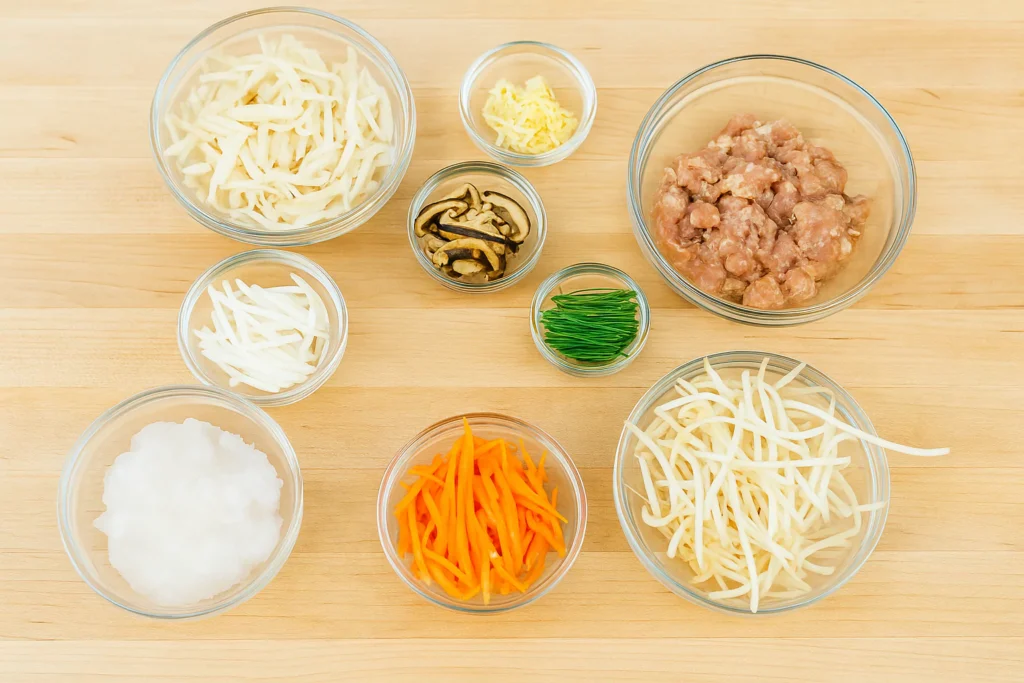
Substitutes and Variations:
- Replace shrimp with tofu or mushrooms for a vegetarian twist.
- No bamboo shoot? Use water chestnuts or zucchini strips.
- If you don’t have harusame, thin rice noodles work too.
Step-by-Step Instructions
1. Prep the Mushrooms and Proteins
Soak the shiitake mushrooms in warm water until they’re tender (around 15 minutes). Keep the soaking water—it becomes a flavorful broth. Cut the shrimp and chicken into small bites. Combine them in a bowl with ground chicken, soy sauce, sake, and a bit of starch to hold the mixture together.
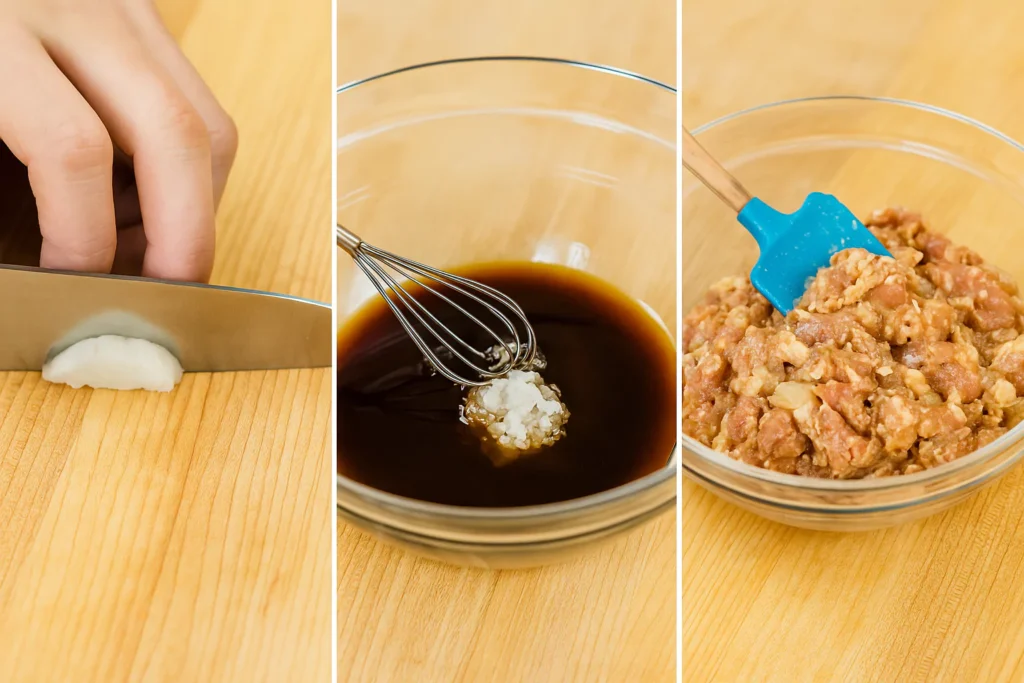
2. Cook the Noodles
Boil the glass noodles for 2–3 minutes until soft. Rinse under cool water, drain well, and snip into shorter lengths so they’re easier to bite through.
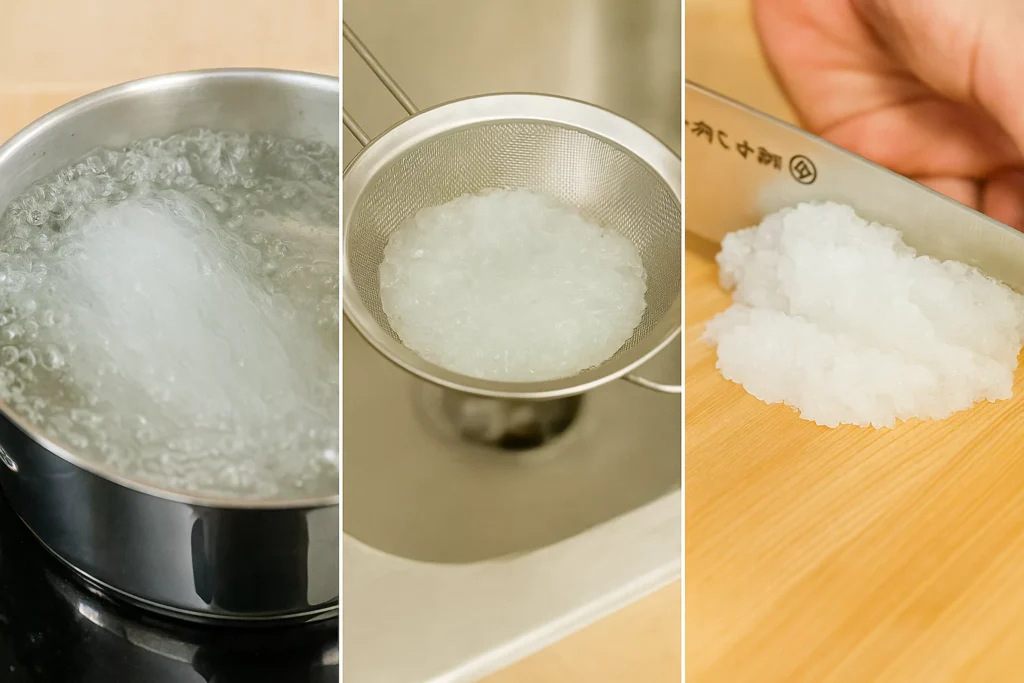
3. Chop the Veggies
Slice all your vegetables into thin, uniform matchsticks. That includes the bamboo shoots, rehydrated mushrooms, carrot, green onion, garlic chives, and fresh ginger. Rinse and drain the bean sprouts.
4. Stir-Fry the Filling
Warm sesame oil in a large frying pan over medium heat. Add the ginger first, then the marinated meats. Cook until they’re just done. Toss in the bamboo shoots and carrot. Cook a few minutes more. Now stir in the remaining vegetables and noodles. Pour in the reserved mushroom broth along with a splash of soy sauce and season with salt and pepper. To finish, mix a little starch with water to thicken the filling. Let everything cool before wrapping.
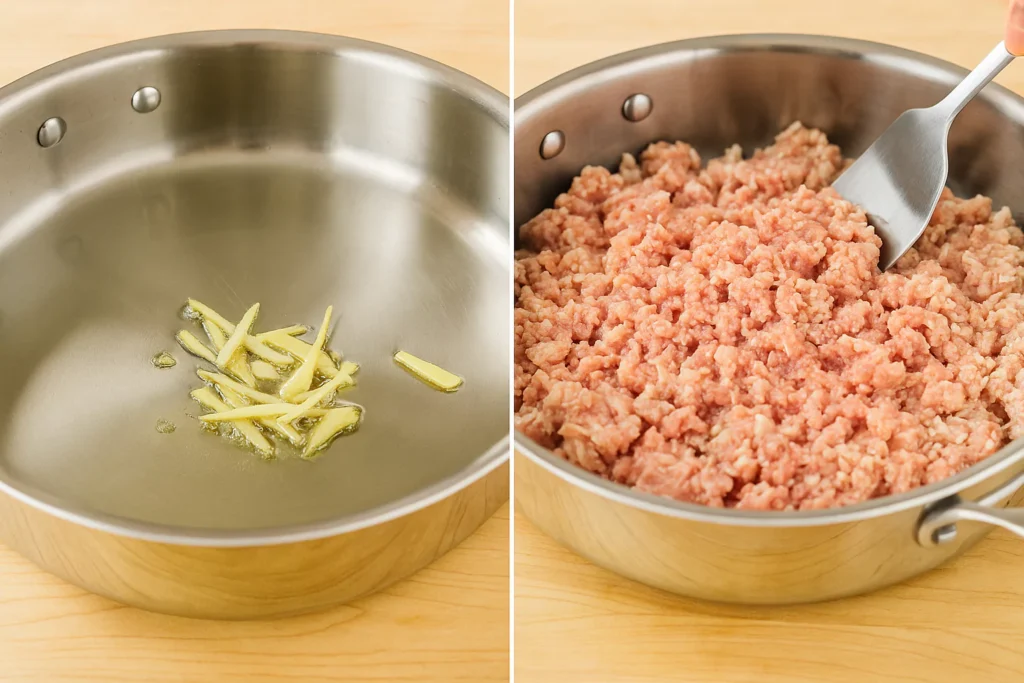
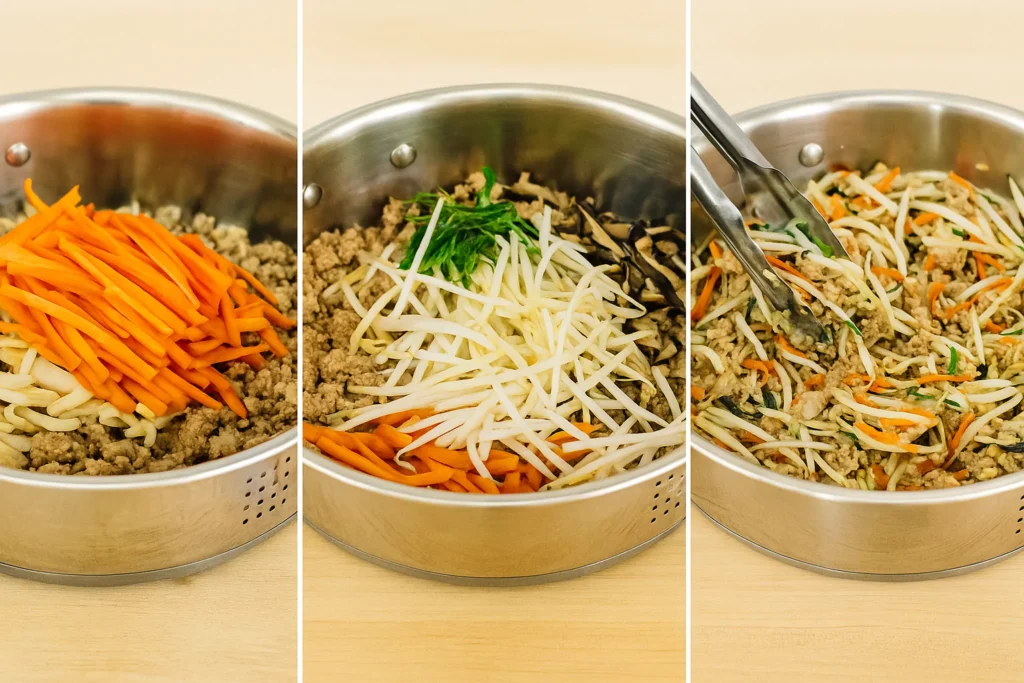
How to Wrap Harumaki
- Prep the wrappers: Keep them under a damp cloth so they don’t dry out.
- Lay flat: Place a wrapper on the table like a diamond.
- Spoon about 2 tablespoons of the prepared filling slightly below the center of the wrapper.
- Fold & roll: Fold the bottom up, then tuck in both sides. Roll tightly.
- Seal it: Mix flour with water to make a glue-like paste. Dab it on the final corner to seal.
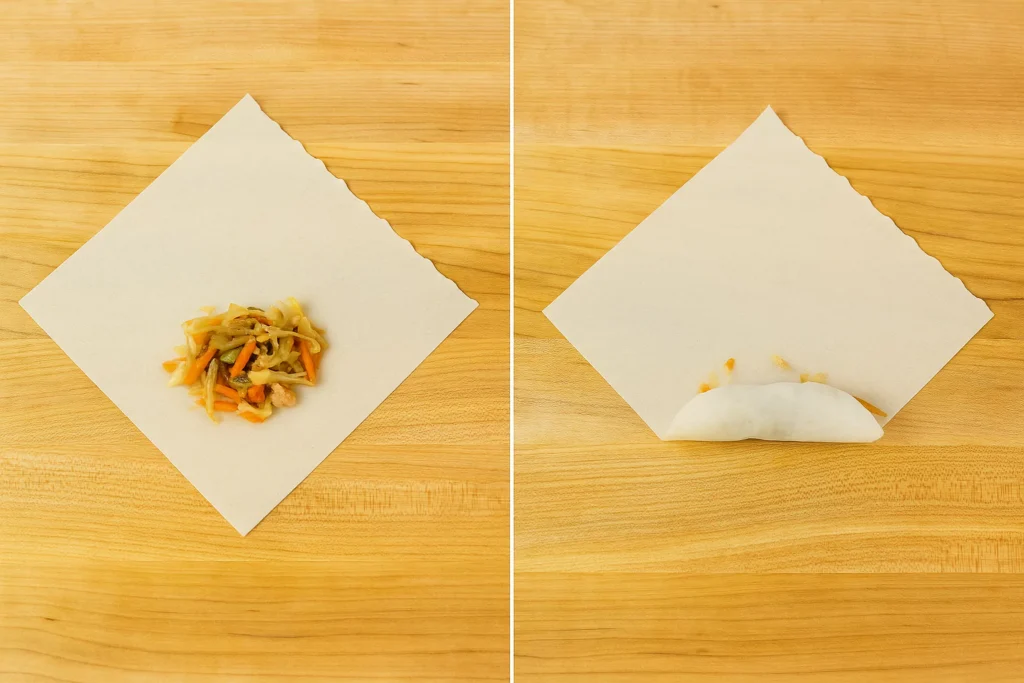
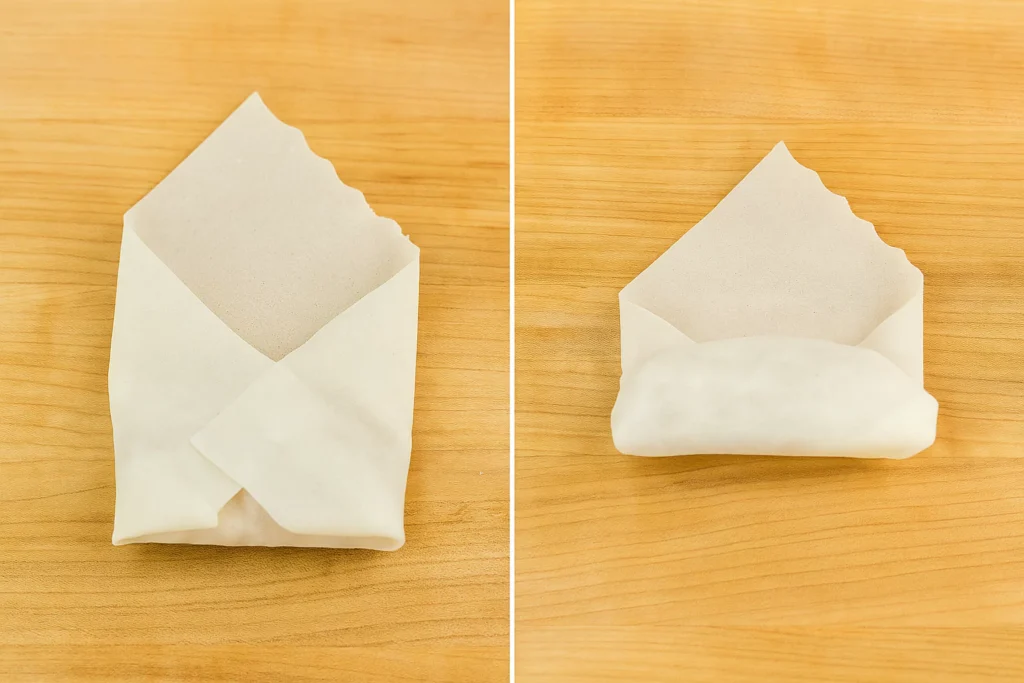
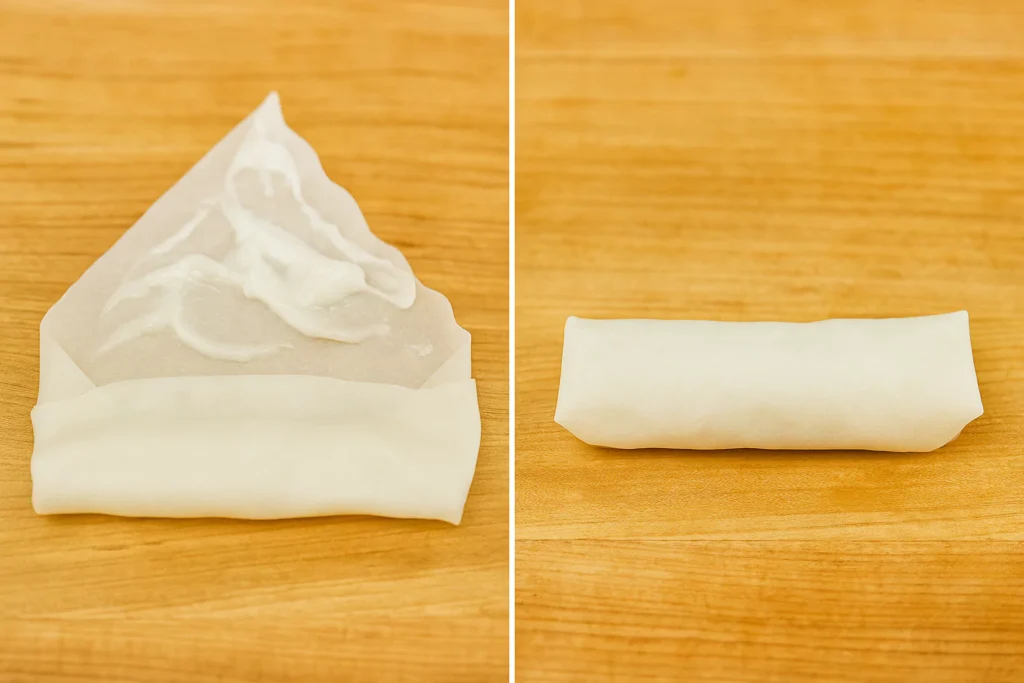
Tip: Tightly rolling prevents air pockets, which can cause bursting during frying.
How to Cook Harumaki
Deep-Fry Method (Traditional):
Warm oil in a deep, heavy-bottomed pot until it reaches 340°F (170°C). Carefully fry a few rolls at once, cooking each batch for around 5 minutes until crisp and golden. Drain on paper towels or a cooling rack.
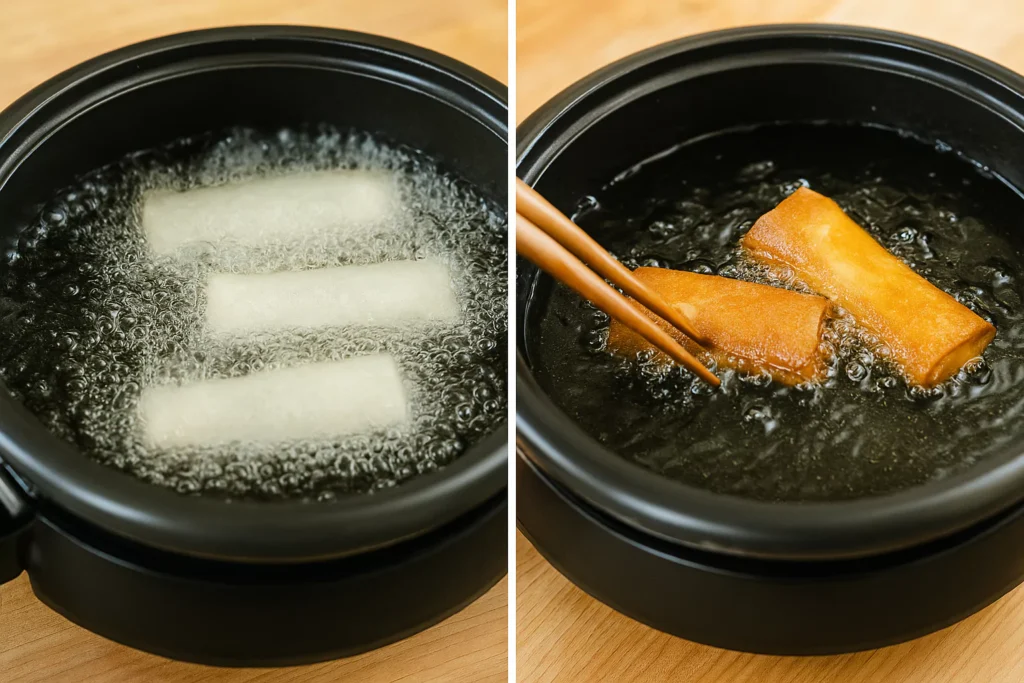
Baked Method (Healthier):
Preheat oven to 400°F (200°C). Place rolls on a lined baking sheet, brush them with oil, and bake for 10–12 minutes, turning halfway through.
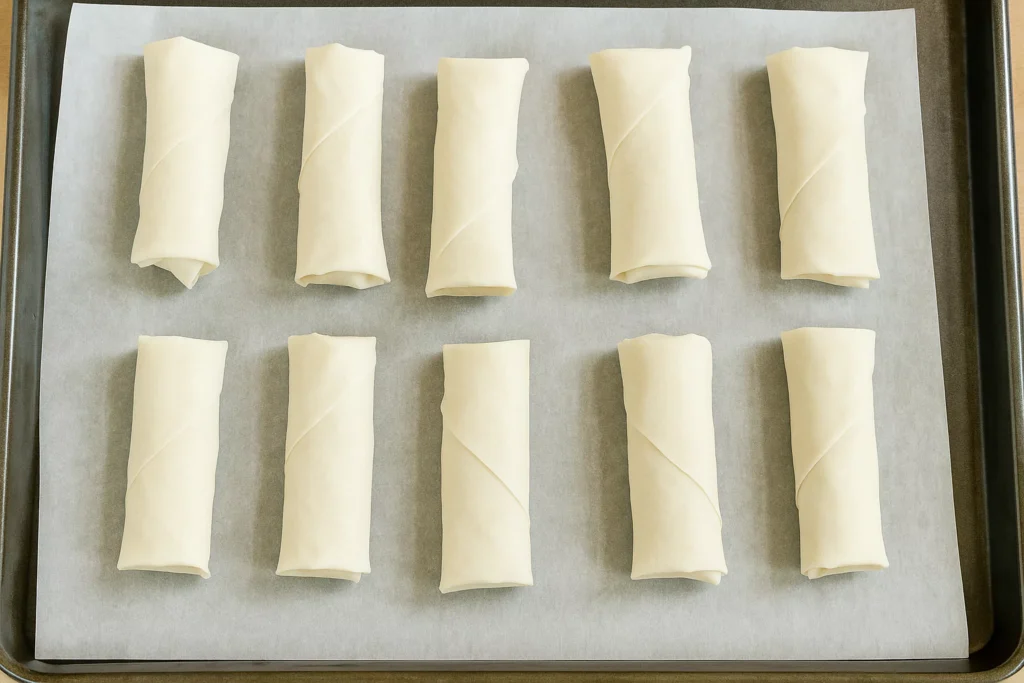
Storage and Make-Ahead Tips
- Prep ahead: The filling can be made the day before. Store in an airtight container.
- Fridge storage: Cooked rolls last 2 days. Reheat in the oven to keep them crisp.
- Freezing: Freeze raw, wrapped rolls on a tray first. Then bag them up and fry straight from the freezer.
Hana’s Recipe Tips
- Use fresh fillings – Freshly chopped ingredients help prevent sogginess.
- Keep it dry – Make sure your filling is cool and dry before rolling.
- Avoid overfilling the wrapper — using too much can cause it to rip or leak during cooking.
- Even frying – Don’t overcrowd the pot. Oil temperature matters!
- Serve right away – Harumaki tastes best fresh and hot.
How to Make Harumaki (Japanese Spring Rolls) 春巻き
Course: AppetizersCuisine: JapaneseDifficulty: Medium10 spring rolls
servings30
minutes15
minutes180 kcal per roll (estimate based on frying)
kcalHarumaki are crispy Japanese spring rolls filled with savory shrimp, chicken, and vegetables. Perfect as a snack or appetizer!
Ingredients
4 dried shiitake mushrooms
¼ cup water (for soaking mushrooms)
4 shrimp (peeled, deveined)
2 chicken tenders (chopped)
1.5 oz glass noodles (harusame)
½ boiled bamboo shoot (thinly sliced)
1 knob fresh ginger (grated)
1 white Tokyo negi (thinly sliced)
2 stalks garlic chives (cut in strips)
3 inches carrot (julienned)
2.5 oz bean sprouts
1 Tbsp toasted sesame oil
- Shrimp & Meat Marinade:
2 tsp soy sauce
2 tsp sake
2 tsp potato starch or cornstarch
- Filling Seasoning:
¼ cup shiitake soaking water
2 Tbsp soy sauce
1 tsp kosher salt
Freshly ground black pepper
2 Tbsp potato starch or cornstarch + 2 Tbsp water (slurry)
- To Roll & Fry:
10 Harumaki wrappers
2 Tbsp all-purpose flour + 2 Tbsp water (for sealing)
3 cups neutral oil (for frying)
- For Serving:
Soy sauce
Rice vinegar
Japanese karashi mustard
Directions
- Soak mushrooms in warm water for 15 minutes. Squeeze dry and reserve the water.
- Chop shrimp and chicken, then combine with ground pork and marinade ingredients.
- Cook noodles per package directions, then cut into short pieces.
- Julienne all vegetables and ginger. Rinse bean sprouts.
- Heat sesame oil in a pan. Cook ginger and marinated meat until browned.
- Add bamboo shoot and carrot. Stir-fry until slightly tender. Then add other vegetables and noodles.
- Add shiitake dashi, soy sauce, salt, and pepper. Stir and cook for a minute.
- Stir in potato starch slurry. Let the filling cool completely.
- Lay out a wrapper like a diamond. Add filling. Fold up the bottom edge, tuck in the sides, and roll it snugly into a tight cylinder.
- Seal with flour-water paste. Repeat with remaining wrappers.
- Deep-fry rolls in 340°F oil until golden and crispy (about 5 minutes). Drain excess oil.
- Serve with soy sauce, vinegar, and karashi mustard.
Notes
- Keep wrappers covered with a damp cloth to avoid drying.
Do not overcrowd the pan while frying.
The filling must be cool and moisture-free before wrapping to avoid bursting.
Fun Harumaki Variations
- Vegetarian Delight: Skip meat, use tofu or extra veggies.
- Cheesy Version: Add a little shredded mozzarella for a fusion twist.
- Mini Rolls: Cut wrappers in half for bite-sized snacks.
- Spicy Filling: Mix in chili paste or sriracha for heat.
FAQs
Can I make Harumaki vegetarian?
Yes! Use tofu and more vegetables. Just be sure to drain excess moisture.
What’s the difference between Harumaki and other spring rolls?
Harumaki is Japanese-style, with clear noodles and lighter seasoning compared to Chinese rolls.
How do I store leftovers?
Refrigerate for 2 days or freeze before cooking. Reheat in oven or air fryer.
What sauce goes best with Harumaki?
Try a simple mix of soy sauce, rice vinegar, and a touch of spicy mustard.
Can I bake instead of fry?
Absolutely! Just brush with oil and bake until crispy.
Wrap-Up
Now that you’ve seen how easy and versatile Harumaki can be, it’s your turn to try! Whether you enjoy them classic and crispy, or baked and modern, they’re a delicious way to explore Japanese flavors. So gather your ingredients, roll up your sleeves, and get cooking—your homemade Harumaki adventure awaits!
Planning a trip to Japan? Don’t miss this Ryokan with Private Onsen Guide to find the most relaxing traditional stays.
